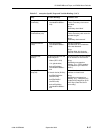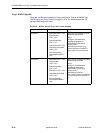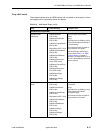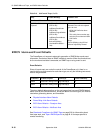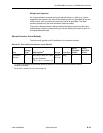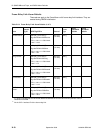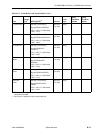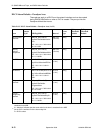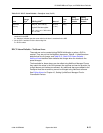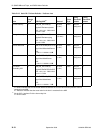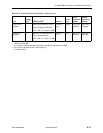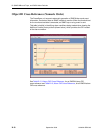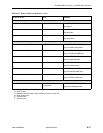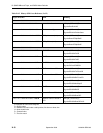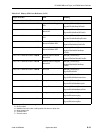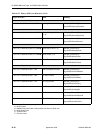
B. SNMP MIBs and Traps, and RMON Alarm Defaults
9128-A2-GB20-80 September 2002
B-23
DLCI Alarm Defaults – NetScout Area
These alarms can be created during RMON initialization or when a DLCI is
created. They are put into the NetScout alarm area. Table B-11 identifies alarm
defaults that do not change, and Table B-13, Static DLCI Alarm Defaults –
NetScout Area identifies alarm defaults that change when the interface’s line
speed changes.
The thresholds for these alarms can be edited using NetScout Manager Plus so
they match the values in the SLA between the customer and service provider. Up
to eight alarms per interface are allowed. Any additional alarms are added to the
Paradyne Area alarms and they cannot be changed using NetScout software.
See
Editing Alarms
in Chapter 10,
Setting Up NetScout Manager Plus for
FrameSaver Devices
.
Maximum
Latency
A
MIB:
pdn_FrExt.mib (E)
Tag:
devFrExtLatencyMax
OID:
.1.3.6.1.4.1.1795.2.24.2.
6.9.4.3.1.I.D
60 secs
(1 min)
Rising 0 0
Table B-12. DLCI Alarm Defaults – Paradyne Area (2 of 2)
Item
Sample
Type
1
MIB/Tag/OID
2
Interval
Event
Type
Rising
Threshold
Default
Falling
Threshold
Default
1
D = Delta. Indicates that the calculated difference between the current value and the previous value is
contained in the MIB.
A = Absolute. Indicates that the exact value for the item is contained in the MIB.
2
I in the OID = Interface ID of the frame relay link.
D = DLCI number.



